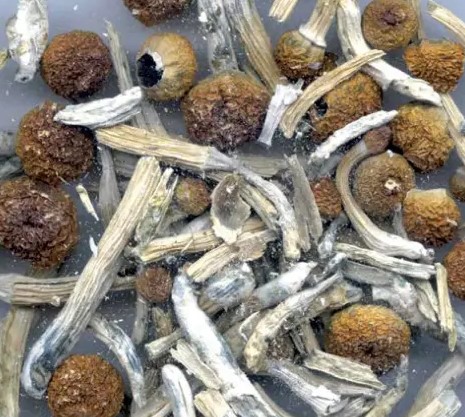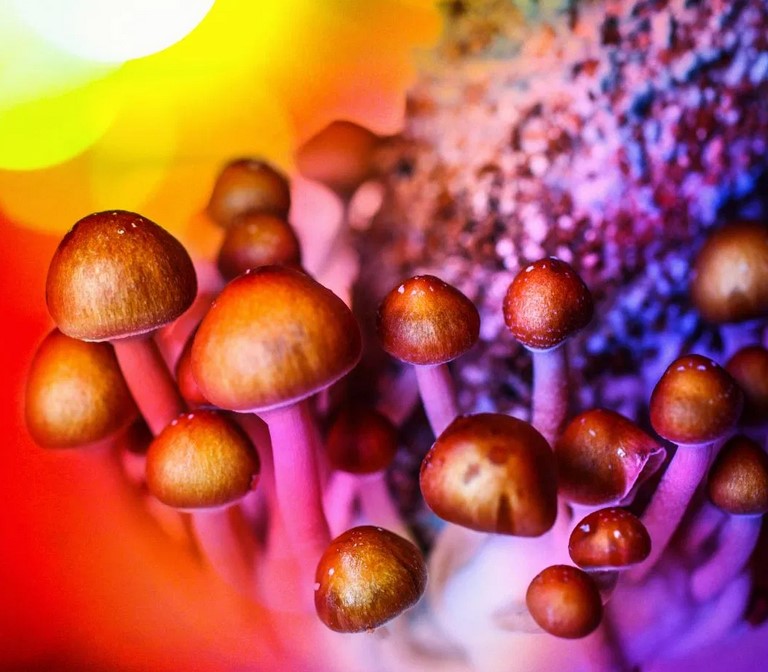Psilocybin is a psychedelic chemical found in certain mushrooms that grow in Europe, South America, Mexico, and the United States. Magic mushrooms are known as psilocybin-containing mushrooms. Psilocybin is a recreational drug that people use for pleasure. It has similar effects to hallucinogenic drugs like LSD, such as euphoria and sensory distortion. Looking to try Psilocybin? Check out this Vision Edibles – Mushroom Bars.
A landmark research by the Johns Hopkins Center for Psychedelic and Consciousness Research was published in 2006. In 2006, researchers at the Johns Hopkins Center for Psychedelic and Conscioushy Research released a study on psilocybin’s safety and positive effects. Researchers have also been looking into whether it may be used to treat a variety of ailments.
In October 2020, Oregon became the first state to legalize psilocybin. This gives policymakers and physicians two years to work out kinks before it is made legal. Psilocybin is a Schedule I narcotic that has a high potential for abuse and no accepted medical use, according to the Drug Enforcement Administration (DEA).
Users who take psilocybin may experience unpleasant hallucinations, fear, and panic as a result of its effects. While medical organizations do not consider psilocybin addictive, users can experience disturbing hallucinations, anxiety, and panic after taking it.
Psilocybin vs. THC: Similar or Not?
The primary distinction between psilocybin and THC is that the main psychoactive component in magic mushrooms, psilocybin, is distinct from the major psychoactive component in cannabis, which is THC (tetrahydrocannabinol).
Both drugs induce distinct states, but both are entheogens (which are usually natural-world chemicals). Entheogens are plant-based medicines that people use to enter nonordinary states of religious or spiritual enlightenment.

What is psilocybin?
Psychedelics are chemicals that distort people’s reality and cause hallucinations. People can consume psilocybin through certain types of mushrooms, which is a hallucinogen.
How it works
The brain’s serotonin receptors are activated by psilocybin. The prefrontal cortex is the most common site of action for psychedelics. Hallucinogens also work in other areas of the brain that control arousal and panic responses.
Psilocybin does not always produce vivid visual or auditory manifestations. Instead, it modifies how individuals who use the drug view things and people that are already in their environment. The quantity of psilocybin taken, a person’s prior experiences, and their expectations about how the experience will evolve can all impact how the drug works.
Psilocybin’s psychedelic effects typically start 30 minutes after ingestion and last 4-6 hours. Changes in sensory perception and thought patterns can last for several days in some individuals.
Dried mushrooms have about ten times more psilocybin than fresh ones.
Consumption
Mushrooms that contain psilocybin are tiny and usually brown or tan in color. People frequently mistake mushrooms containing psilocybin for poisonous varieties of other mushrooms in the wild.
Psilocybin is most often taken as a tea or ingested with a food to conceal the medicine’s harsh flavor. Dried mushrooms are crushed into a powder and sold in capsule form by manufacturers. Some consumers coat chocolate over these mushrooms to disguise their flavor.
Extent of use
According to the 2015 National Survey on Drug Use and Health, 8.5% of people in the United States have used psilocybin at some point in their lives.
The use of psilocybin in religious or mystic settings dates back to pre-Columbian Mesoamerican civilizations and continues today. People who go to dance clubs or seek a transcendent spiritual experience frequently take psilocybin recreationally.
Doctors have tried psilocybin in the treatment of cluster headaches, depression, end-stage cancer anxiety, and other types of anxiety in hospitals. Some scientists have disputed the efficacy and safety of psilocybin as a therapeutic intervention.
Effects

The effects of psilocybin are comparable to those of LSD. They include altered perception of time and space, as well as significant emotional changes. Psilocybin’s effects vary from person to person depending on their mental state, personality, and current environment.
Users who are sensitive to psilocybin or have mental health conditions worry about having a negative experience because of the side effects. After recreational use of psilocybin, psychological trauma is the most prevalent adverse event. Extreme anxiety or short-term psychosis are two forms of psychological turmoil that can occur as a result of this distress.
Psilocybin as a treatment for depression
Researchers have looked into whether psychological experts can use psilocybin and other hallucinogens as a therapy for depression.
Psilocybin was tested for its ability to cure depression without dulling emotions in one study. Psilocybin appears to be helpful in treating depression when combined with psychological counseling, according to the findings.
The second experiment looked at the connection between psilocybin-induced hallucinations and therapeutic benefits.
Risks
Some people who consume psilocybin may have disturbing changes in the way they perceive the world. These frequently manifest as a vision flashback, which is an unpleasant recollection of a traumatic experience. People can continue to have flashbacks for weeks to years after taking the drug. The condition now known as hallucinogen-persisting perception disorder was first described by physicians in 1973.
Some people who use psilocybin can have panic, agitation, bewilderment, delirium, insanity, and schizophrenia-like symptoms that require a trip to the emergency department. Most of these effects are treated with drugs like benzodiazepines in most situations. Symptoms generally go away after 6–8 hours as the psilocybin’s impacts wear off.
Finally, while the danger is minor, some psilocybin users have poisoned themselves by consuming a harmful mushroom by accident. Muscle spasms, dementia, and delirium are all possible symptoms of mushroom toxicity. If these symptoms appear, a person should visit an emergency department right away.
People should remove all mushrooms from locations where children are frequently encountered to avoid accidental ingestion, since hallucinogenic and other poisonous varieties are prevalent in most ecosystems.
The majority of mushroom ingestions produce minor stomach issues, with the most severe cases requiring medical treatment.
Abuse potential
Psilocybin is not physically addicting and does not produce any observable physical effects when discontinued. However, after several days of psilocybin intake, individuals may experience psychological desynchrony and difficulty adjusting to reality.
Long-term usage may result in tolerance to psilocybin’s effects, and cross-tolerance occurs with LSD and mescaline. Users of these compounds must wait at least a few days between doses to get the full effect.
